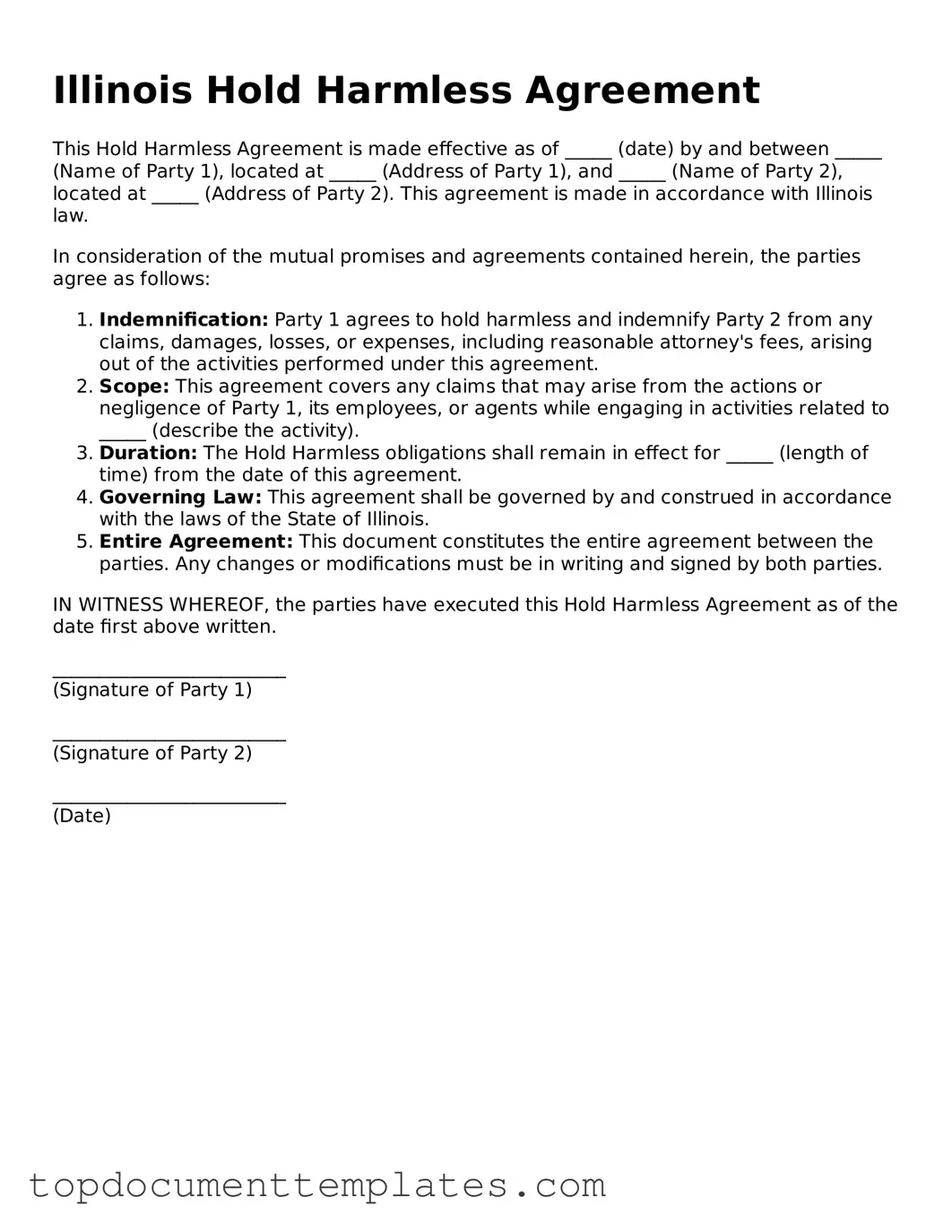In the realm of legal agreements, the Illinois Hold Harmless Agreement form serves as a crucial tool for individuals and organizations seeking to manage liability risks associated with various activities. This document is designed to protect one party from legal claims or damages that may arise as a result of actions taken by another party. Typically utilized in contexts such as rental agreements, event planning, and service contracts, the form outlines the responsibilities and liabilities of the parties involved. By signing this agreement, one party agrees to assume responsibility for any injuries or damages that may occur, effectively shielding the other party from potential lawsuits. It is essential to understand the specific terms and conditions outlined in the form, as they dictate the extent of liability coverage and the obligations of each party. Furthermore, the agreement must be executed voluntarily and with a clear understanding of its implications, ensuring that both parties are fully aware of their rights and responsibilities. As such, the Illinois Hold Harmless Agreement is not merely a formality; it is a vital instrument for risk management and legal protection in various scenarios.
